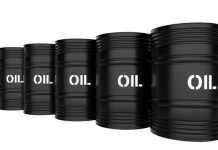This month, our columnist peers through the microscope to examine the fascinating world of Microreactors. Microreactors have numerous advantages and offer an exciting alternative to batch processing. 3D Printed microreactors will open up an entirely new world of chemical synthesis, that is efficient, safer and more sustainable.
A recent paper describes the synthesis of linezolid, a blockbuster antibacterial drug, in a novel, first of its kind, continuous process. Synthesis of linezolid involves a tedious 7-step process and conventionally such multistep processes are carried out in batch mode, with the intermediate from each step isolated and purified before being used in the subsequent step. In the new process, all seven reactions were carried out one after the other, without isolating and purifying the intermediates, in a single continuous flow microreactor. The yield of linezolid was 73% and the residence time was less than 30 minutes. This marks an important milestone in the development of flow chemistry since it is the highest number of consecutive reaction steps ever performed in a continuous flow reactor. It may well be the coming of age moment for flow chemistry and microreactors in chemical synthesis.
Microreactors
Prof Wolfgang Ehrfeld, who in 1995 had the vision to see an analogy between microelectronics and microreactors is widely regarded as the father of Flow Chemistry. Microfluidic devices like microreactors manipulate small volumes of fluids in geometrically controlled environments leading to a fundamentally different flow regime, thereby creating a new realm of chemical synthesis hitherto not possible in classical batch processes. Small volumes of a chemotherapy drug, for instance, can be manufactured in a tailor-made microreactor set-up, which can be safely and easily discarded at the end if necessary. A bigger batch reactor, on the other hand, would require extensive clean-up at the end since the product is cytotoxic.
Advantages
The advantages of Flow Chemistry are many and they stem from the unique geometry and flow characteristics of microfluidic devices. To begin with, the flow is laminar and the mixing between fluids is through molecular diffusion and not convective turbulence. Mass transfer is thus very efficient and concentration gradients are completely eliminated. The biggest advantage of microfluidic devices is their high surface to volume ratio which allows for very rapid heat dissipation and precise temperature control. The high mass and heat transfer rates in microreactors allow reactions to be carried out under very aggressive and unusual stoichiometric conditions resulting in higher yields than attainable with conventional reactors.
The small inventories of microreactors make the process inherently safer. Their small footprint makes them eco-friendly. The significantly smaller volumes of microfluidic devices compared to batch reactors are particularly useful while studying new chemical reactions for the purpose of gathering data. Because the volumes are small, reactions involving explosive and toxic materials can be carried out with relative ease. Violently exothermic reactions can be studied with significantly reduced risk. The advantages of Flow Chemistry over “Flask Chemistry” in process development are tremendous.
Scale-up
A huge advantage of microreactors is realized during scale-up. Unlike conventional reactors where scale-up involves dimensional changes, microreactors are scaled up by simply adding parallel modules to increase the production to the desired commercial levels. Since there are no dimensional changes from the laboratory stage to the industrial stage, the size-dependent uncertainties are eliminated in the case of a scale-up of microreactors.
Flash Chemistry
Microreactors have spawned Flash Chemistry, a regime of chemical synthesis in which extremely fast reactions are carried out in a controlled fashion to produce desired molecules with high selectivity. The reaction times range from milliseconds to a few seconds. Being highly exothermic, removing heat is very crucial in controlling these fast reactions. Fast reactions involve unstable intermediates, which decompose very rapidly. In a microreactor, the intermediates are transported quickly to the next reaction stage before they decompose. The short residence times and the high heat dissipation rates of microreactors are essential for Flash Chemistry. Multistep synthesis can be accomplished based on the concept of Flash Chemistry. A reagent reacts with a substrate to generate a highly reactive intermediate which reacts with a second substrate to yield a second highly reactive intermediate. This reacts with a third substrate to produce a third highly reactive intermediate and so on. Microreactors help in taming the reactivity of unstable intermediates. Flash Chemistry has been successfully used in the synthesis of organolithium compounds, which are an important class of reagents in the pharmaceutical industry.
Limitations
The most obvious limitation of microreactors is production capacity. Despite the theoretical possibility of adding unlimited parallel modules, practical considerations limit the size of a plant-based on microreactors. Handling multiphase reactions, especially involving solids, is another challenge for microreactors.
Fabrication
Microreactors are fabricated out of metals, alloys, glass, ceramics, silicon, and various polymers. The commonly employed fabrication techniques – etching and precision machining – have their roots in semiconductor production. The inner surfaces of the microchannels are coated with the catalytically active material if needed. Micro-heat exchangers are built-in though lithography and electroplating. Mass-produced microreactors in various predetermined architectures are commercially available in steel, glass, and ceramics. The need for customized, more complex microreactors incorporating mixing structures, separation units, and inline sensors, gave rise to a new kind of fabrication technique known as Soft Lithography, using a polymer – Poly Dimethyl Siloxane (PDMS). Microreactors fabricated from PDMS have severe limitations of temperature and pressure but are extensively used in biochemical applications like gene sequencing and point-of-care diagnostics. 3D Printing is now coming to the forefront in the fabrication of microreactors. With 3D Printing it is possible to customize microreactors of any complexity in a variety of metals, alloys, ceramics, and polymers.
Future
Despite making great strides in various laboratories and institutes, the chemical industry at large has been shy to adopt microreactors and Flow Chemistry. Synthesis of APIs and specialty chemicals in microreactors has evinced renewed interest in recent times, judging by the spike in publications of both popular and serious literature.
There is a growing interest in the use of microfluidic devices to manufacture small quantities of personalized medicines and bespoke specialty chemicals. Microreactors could sound the death knell for the multipurpose plants and mark the advent of an era of fully dedicated product lines. Microfluidic devices like microreactors have begun stepping out of the cocoons of the academic world.
In the 1970s, E F Schumacher, a German-born British economist popularised the concept of “Small is Beautiful”. With an unprecedented combination of efficiency, safety, and sustainability, microreactors are poised to power Schumacher’s revolution in the chemical industry.
Readers’ responses may be sent to k.sahasranaman@gmail.com or chemindigest@gmail.com
































